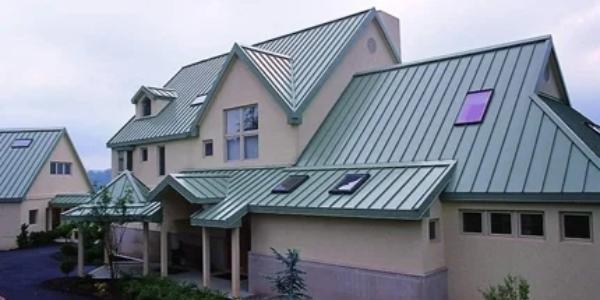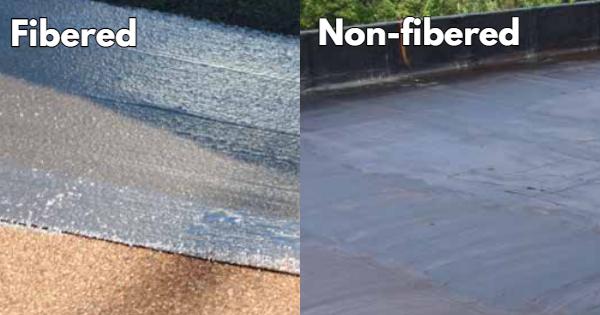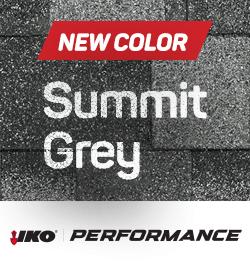Pros and Cons: A Comparative Analysis for Deciding on Shingles or Metal

By Janney Roofing.
Choosing a roofing material for your new roof can be overwhelming. Here are some considerations to help you make an informed decision and love what you choose.
Your home is likely one of your most important assets and you want to make sure you love it for as long as you live there. When needing a roof replacement there are so many choices and considerations to keep in mind. Not only do you want to find the best color and material, but you need the right contractor for the job and the best timing for your household. We’ve put together a list of additional considerations, particularly when deciding between a shingle roof or a metal roof. When you understand your material options, you can focus on other important decisions in the process.
Types of shingle and metal roofs
Asphalt shingle roofs
Asphalt shingle roofs are the most common type of roofing material. They are made of fiberglass or organic felt mat that is coated with asphalt and embedded with ceramic granules. Asphalt shingles come in a wide range of styles and colors, making them a popular choice for homeowners who want to match their roof to the style of their home.
One of the main advantages of asphalt shingles is their affordability. They are significantly cheaper than metal roofs and are easy to install. They also have a relatively long lifespan of 15-30 years, depending on the quality of the shingles and the climate in which they are installed.
However, asphalt shingles do have some drawbacks. They are not as durable as metal roofs and are more susceptible to damage from high winds, hail and extreme temperatures. They are also prone to algae growth, which can cause discoloration and reduce the lifespan of the shingles.
Metal roofs
Metal roofs are becoming an increasingly popular choice for homeowners. They are made of steel, aluminum or copper and come in various styles, including standing seam, corrugated and metal tiles. Metal roofs are highly durable and can last for 50 years or more with proper maintenance.
One of the main advantages of metal roofs is their ability to withstand extreme weather conditions. They are highly resistant to wind, hail and fire, making them an excellent choice for homeowners in hurricane-prone areas. They are also energy efficient, reflecting heat away from the home and reducing cooling costs.
However, metal roofs are significantly more expensive than asphalt shingles and can be difficult to install. They also require periodic maintenance to prevent rust and corrosion. Finally, some homeowners may find the look of metal roofs to be less appealing than that of asphalt shingles.
In conclusion, both asphalt shingle roofs and metal roofs have their advantages and disadvantages. The choice between the two will depend on a variety of factors, including budget, climate and personal preference.
Comparative analysis
Durability
When it comes to durability, both shingle and metal roofs have their pros and cons. Shingle roofs are known to last between 15 to 30 years, depending on the materials’ quality and the level of maintenance performed. On the other hand, metal roofs can last up to 50 years or more. Metal roofs are more resistant to hail, wind and fire damage. However, they can be prone to denting from heavy objects like falling tree branches.
Cost
The cost of a roof can vary greatly depending on several factors such as the size of the roof, the materials used and the complexity of the installation. Generally, shingle roofs are less expensive than metal roofs. The cost of a shingle roof can range from $3 to $5 per square foot, while a metal roof can cost anywhere from $8 to $14 per square foot. However, it’s important to note that metal roofs can save you money in the long run due to their durability and energy efficiency.
Maintenance
Both shingle and metal roofs require regular maintenance to ensure their longevity. Shingle roofs require periodic inspections to check for damage, leaks and missing shingles. They also need to be cleaned of debris and moss that can accumulate on the surface. Metal roofs require less maintenance than shingle roofs, but they still need to be inspected periodically for damage and leaks. They also need to be cleaned to prevent debris from accumulating on the surface.
Energy efficiency
Metal roofs are more energy efficient than shingle roofs. They reflect the sun’s rays, which helps to keep your home cooler and reduces the load on your air conditioning system. Shingle roofs, on the other hand, absorb the sun’s rays, making your home hotter and increasing your energy bills. However, it’s important to note that the color of your roof can also affect its energy efficiency.
Weather resistance
Both shingle and metal roofs are designed to withstand harsh weather conditions. Shingle roofs are more resistant to wind and rain, while metal roofs are more resistant to hail and fire. However, choosing the right materials for your specific climate and location is important. For example, since much of Florida is prone to hurricanes, you may want to consider a metal roof designed to withstand high winds.
[Insert Table Comparison image here]
In conclusion, both shingle and metal roofs have their advantages and disadvantages. When considering which type of roof to install, it’s important to take into account factors such as cost, durability, maintenance, energy efficiency and weather resistance. Ultimately, the choice will depend on your specific needs and budget.
Installation process
When it comes to installing a new roof, there are a few key differences between shingle and metal roofing. In this section, we’ll take a closer look at what to expect during the installation process for both types of roofing materials.
Shingle roof installation
Shingle roofs are the most common type of roofing material, and the installation process is relatively straightforward. Here are the basic steps that contractors will take when they show up to install a shingle roof:
- Remove the old roof: The first step your contractor will take when installing a new shingle roof is to remove the old roof. This involves stripping off the old shingles, underlayment and any other roofing materials.
- Install the underlayment: Next, your contractor will install a new underlayment once the old roof is removed. This material layer goes directly over the roof deck and provides a barrier against water and other elements.
- Install the shingles: With the underlayment in place, the next step is installing them. This involves laying down rows of shingles, starting at the bottom of the roof and working your way up.
- Finish the roof: Once all the shingles are in place, the final step is finishing the roof. This involves installing flashing around any roof penetrations (such as chimneys or vents) and along the roof edges.
Metal roof installation
Installing a metal roof is a bit more complex than installing a shingle roof, but the end result can be more durable and long lasting. Here is what to expect from your roofing company when they install a metal roof:
- Remove the old roof: Just like with a shingle roof, the first step in installing a metal roof is to remove the old roof. This involves stripping off the old roofing materials and any underlayment.
- Install the underlayment: The next step is to install a new underlayment once the old roof is removed. This is similar to the underlayment used in shingle roofing but may be a bit thicker or more durable.
- Install the metal panels: With the underlayment in place, the next step is installing them. This involves laying down rows of panels, starting at the bottom of the roof and working their way up.
- Finish the roof: Once all the metal panels are in place, the final step is finishing the roof. This involves installing flashing around any roof penetrations and along the roof edges, just like with a shingle roof.
Impact on home insurance
When it comes to choosing between shingle and metal roofs, one important factor to consider is the impact on your home insurance. Your roof is a critical component of your home, and the type of roof you have can affect your insurance premiums and coverage.
Shingle roofs
Shingle roofs are the most common type of roof and are typically less expensive than metal roofs. However, they are also more susceptible to damage from high winds, hail and other weather events. As a result, homes with shingle roofs may have higher insurance premiums and may not be eligible for certain types of coverage.
If you have a shingle roof, it is important to make sure that your insurance policy provides adequate coverage for damage caused by weather events. You may also want to consider adding additional coverage for wind and hail damage, depending on where you live.
Metal roofs
Metal roofs are becoming more popular due to their durability and resistance to weather damage. They are also more energy efficient than shingle roofs, which can help lower your utility bills. However, metal roofs are typically more expensive than shingle roofs, which can affect your insurance premiums.
Despite their durability, metal roofs can still be damaged by severe weather events such as hurricanes and hailstorms. However, many insurance companies offer discounts for homes with metal roofs, as they are less likely to sustain damage from weather events.
If you have a metal roof, it is important to make sure that your insurance policy provides adequate coverage for damage caused by severe weather events. You may also want to consider adding additional coverage for wind and hail damage, depending on where you live.
Overall, the type of roof you choose can significantly impact your home insurance premiums and coverage. It is important to carefully consider your options and to make sure that you have adequate coverage for your home and belongings.
Environmental impact
When it comes to the environmental impact of roofing materials, both shingle and metal roofs have their pros and cons. Here are some factors to consider:
- Energy efficiency: Metal roofs are more reflective than shingle roofs, which means they can reflect heat away from your home and reduce cooling costs. However, shingle roofs with light colors or reflective coatings can also be energy efficient.
- Durability: Metal roofs tend to last longer than shingle roofs, which means they need to be replaced less often. This can reduce the amount of waste generated by roofing materials. However, metal roofs are often made from non-renewable resources, whereas some shingle roofs can be made from recycled materials.
- Recyclability: Metal roofs are highly recyclable, which means they can be repurposed at the end of their lifespan. Shingle roofs, on the other hand, are not as recyclable and often end up in landfills.
- Chemical exposure: Shingle roofs can release chemicals into the environment during production and installation. For example, asphalt shingles can release volatile organic compounds (VOCs) into the air. Metal roofs, however, do not release as many chemicals during production or installation.
Overall, both shingle and metal roofs have environmental impacts that should be considered when choosing a roofing material. It’s important to weigh the pros and cons of each option and choose the one that best fits your needs and values.
Aesthetic considerations
When it comes to the appearance of your roof, both shingle and metal roofs have their own unique aesthetic qualities.
Shingle roofs are available in a wide variety of colors and styles, allowing you to choose a look that complements your home’s architecture and exterior color scheme. Asphalt shingles, in particular, are popular due to their affordability, durability and resistance to high winds and heavy rains. However, they do tend to fade over time, which can affect the overall appearance of your roof.
On the other hand, metal roofs offer a sleek, modern look that can add a touch of sophistication to your home’s exterior. They are also available in a range of colors and finishes, including matte, glossy, and textured options. Additionally, metal roofs are highly durable and can last up to 50 years or more with proper maintenance. However, they may not be suitable for all types of homes and can be more expensive than shingle roofs.
Ultimately, the choice between shingle and metal roofs will depend on your personal preferences and the style of your home. It’s important to consider both the practical and aesthetic aspects of each option before making a decision.
Conclusion
When it comes to deciding between shingle and metal roofs, the choice ultimately comes down to your personal preferences and needs. Both types of roofs have their advantages and disadvantages, which we have explored in detail.
If you prioritize affordability and a wide range of design options, shingle roofs may be your best choice. They are typically less expensive than metal roofs and come in a variety of colors and styles to match any home’s aesthetic.
On the other hand, if you value durability and longevity, metal roofs may be the better option. They can last up to 50 years or more with proper maintenance and are highly resistant to damage from weather, fire, and pests.
It’s important to consider the climate you live in when choosing between shingle and metal roofs. While shingle roofs can withstand high winds and rain, they may not be as resistant to extreme heat and UV rays as metal roofs. Additionally, metal roofs may be more prone to rusting in coastal areas with high salt exposure.
Original article source: Janney Roofing
Disclaimer: The information provided on AskARoofer.com or information sent by emails is the opinion of the writers. It is the responsibility of the reader to check for accuracy in one's own jurisdiction, as there are different codes and restrictions for different parts of the country. AskARoofer.com does not accept any liability for the use of information on this website or email. AskARoofer.com has no controls over product failures, installation, or climate conditions that may change the roofing process in your area. Our information is in general to our area and cannot be the same as your local town or state. It is advised to seek the local Building Department, Licensed Contractor, and local Product Representative for proper installation requirements and code enforcement when installing a new roof.
Have a question? AskARoofer.
Find your local roofing contractor in the RoofersCoffeeShop® Contractor Directory.









Comments
Leave a Reply
Have an account? Login to leave a comment!
Sign In